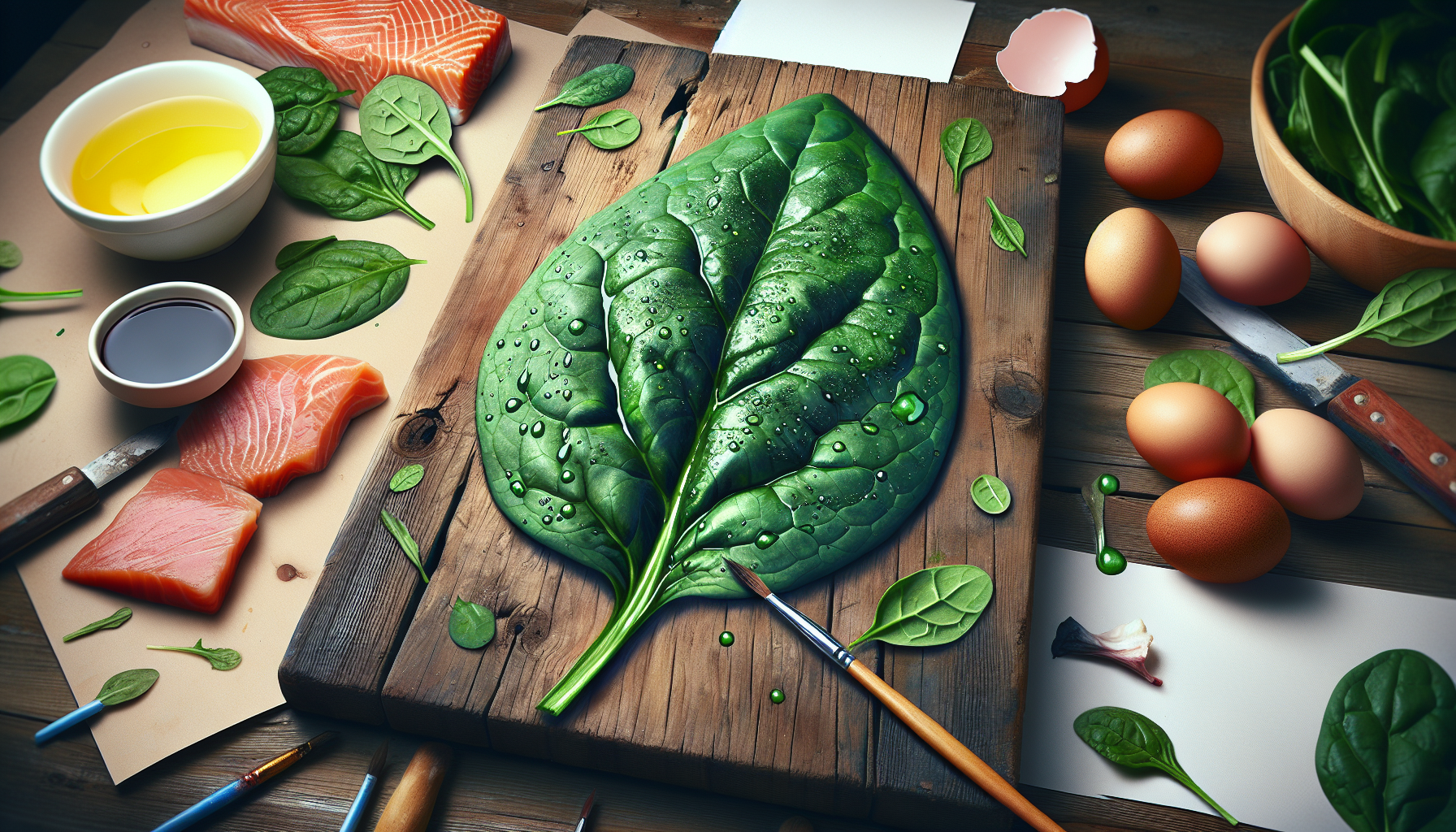What do you really know about oxalates? Have you ever wondered how they affect your diet, especially when it comes to animal products? You’re not alone! This topic can get a bit complicated, but it’s important to understand how oxalates work, how they interact with various foods, and the implications of consuming animal products alongside oxalate-rich foods. Let’s break it down.
What Are Oxalates?
Oxalates, or oxalic acid, are naturally occurring compounds found in various foods and plants. Our bodies also produce oxalates as a by-product of metabolism. They can form insoluble salts with minerals like calcium, which can lead to the formation of kidney stones for some people. Understanding what oxalates are can help you make informed dietary choices.
How Do Oxalates Affect the Body?
For many, oxalates are harmless and are expelled through urine. However, for some individuals, especially those susceptible to kidney stones, the body absorbs oxalates from the diet, leading to higher urine oxalate levels. This can result in a few health concerns, including:
- Kidney stones
- Nutrient absorption issues
- Gastrointestinal problems in some individuals
It’s crucial to note that oxalate sensitivity varies from person to person. So, keep in mind that not everyone will have the same reaction to oxalate-rich foods.
Do Animal Products Contain Oxalates?
Now, you might be asking, “What about animal products?” It’s a very valid question. You see, the confusion often arises because many people associate oxalates primarily with plant foods, particularly leafy greens and various fruits. The good news is that animal products generally contain very low levels of oxalates, if any at all.
Examples of Animal Products and Their Oxalate Content
Here’s a breakdown of some common animal products and their oxalate levels:
| Animal Product | Oxalate Content |
|---|---|
| Beef | Negligible |
| Chicken | Negligible |
| Fish | Negligible |
| Eggs | Negligible |
| Milk & Dairy Products | Low |
| Pork | Negligible |
| Lamb | Negligible |
As you can see, most animal products contain minimal to no oxalates. Milk and dairy products do have a low level of oxalates, but it’s often not significant enough to warrant concern for most people.
Why Are Oxalates an Issue with Plant-Based Foods?
Sure, it’s easy to consider oxalates a problem associated primarily with plant-based foods, but why is that? Many fruits, vegetables, nuts, and seeds contain notable levels of oxalates that can contribute to higher oxalate intake.
Oxalate-Rich Plant Foods
Here’s a quick look at some plant-based foods known to have higher oxalate levels:
| Food | Approximate Oxalate Level (mg per 100g) |
|---|---|
| Spinach | 970 |
| Rhubarb | 860 |
| Beet Greens | 700 |
| Swiss Chard | 660 |
| Cocoa Powder | 600 |
| Almonds | 469 |
| Cashews | 43 |
In particular, spinach and rhubarb top the list for those looking to manage their oxalate intake.
Why Might You Care?
If you already have a history of kidney stones or experience gastrointestinal discomfort, it might be worthwhile to monitor your consumption of these high-oxalate foods. Choosing a more balanced diet that reduces oxalate-rich foods can minimize the risk of complications.
The Relationship Between Calcium and Oxalates
One important aspect to consider when evaluating oxalate intake is calcium. Calcium interacts with oxalate in the body. When calcium binds with oxalate in your gut, it can form insoluble calcium oxalate, which is excreted rather than absorbed. This offers a dual benefit—reducing the amount of oxalate absorbed and also supplying your body with essential calcium.
Calcium-Rich Foods That Pair Well with Oxalate-Rich Foods
You might be wondering how to implement this knowledge into your meals. Here’s a chart of calcium-rich foods that can complement oxalate-rich foods:
| Calcium-Rich Food | Approximate Calcium (mg per 100g) |
|---|---|
| Yogurt | 110 |
| Cheddar Cheese | 721 |
| Broccoli | 47 |
| Fortified Plant Milks | Varies |
| Sardines (with bones) | 381 |
Pairing higher oxalate foods like spinach with calcium-rich foods can mitigate potential issues while enriching your diet.
Do You Need to Avoid Animal Products?
If you’re concerned about oxalates, you might feel tempted to completely avoid animal products, which isn’t necessary. As we’ve seen, animal products contain little to no oxalates, making them a safe choice in your diet.
Balanced Diet Principles
A healthy and balanced diet involves consuming a variety of foods, including both animal and plant products. By focusing on a mix of food sources, you can enjoy the benefits of all essential nutrients while avoiding potential dietary pitfalls.
- Incorporate lean proteins, like chicken and fish, for high-quality sources of nutrients without worrying about oxalates.
- Include a range of vegetables for fiber and vitamins. You can strategize around oxalate levels while still benefiting from nutrition.
- Avoid focusing solely on single nutrients; think about the whole dietary pattern instead.
Are There Vegetarian or Vegan Alternatives?
If you’re vegetarian or vegan and concerned about oxalates, some strategies can help you enjoy a diverse diet while minimizing oxalate intake.
Plant-Based Foods Low in Oxalates
Here’s a few plant-based foods that are lower in oxalates:
| Food | Oxalate Content |
|---|---|
| Kale | Low |
| Cauliflower | Low |
| Carrots | Low |
| Cabbage | Low |
| Zucchini | Low |
These options can fit easily into a vegetarian or vegan lifestyle while keeping your oxalate levels in check.
Cooking Methods Matter
Interestingly, the way you prepare and cook your vegetables can also affect their oxalate levels. Boiling, for instance, can reduce the oxalate content because some of the oxalates leach into the water. Consider this if you’re cooking high-oxalate foods.
Are There Health Conditions Linked to High Oxalate Intake?
While oxalates might not be a concern for everyone, there are specific health conditions that may necessitate vigilance around oxalate consumption.
Kidney Stones
As previously mentioned, those who have a history of kidney stones should be cautious with high-oxalate foods. In the U.S. alone, it’s estimated that about 1 in 10 people will develop a kidney stone at some point in their lives.
Hyperoxaluria
Some individuals suffer from hyperoxaluria, a condition where the body excretes too much oxalate. This condition can be genetic or can arise due to malabsorption disorders. If you find that oxalates are a particular concern for you, consulting with a healthcare professional can help craft a suitable dietary plan.
The Bottom Line: A Well-Rounded Approach
What’s the takeaway? There’s no need to overly stress about oxalates, especially when it comes to animal products. Instead, focus on a balanced diet, incorporating a variety of food products that meet your nutritional needs while allowing you to maintain an enjoyable eating experience.
Listening to Your Body
Listening to your body and understanding how it reacts to different foods will guide your choices. If you’re unsure about your oxalate intake or if you have health concerns, consider discussing it with a registered dietitian or healthcare provider. They can provide personalized advice tailored to your dietary needs and health goals.
Enjoy Your Food
Ultimately, food is more than just nutrients. It’s an experience, a joy, and an opportunity for connection. By focusing on not only what you eat but also how you eat, you can create a fulfilling, nurturing, and balanced relationship with food.
As you navigate the diverse world of foods and their properties, keep informed, stay curious, and prioritize your health—mindfully and joyfully.





